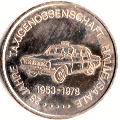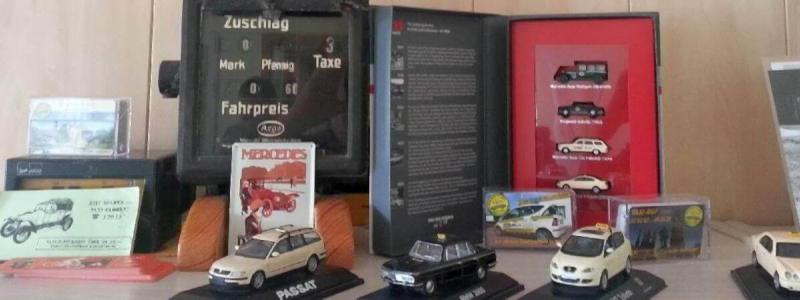History of the taxis in our city
Sedan chairs since ancient times
The first sedan chairs were already in antiquity. Babylonians, Egyptians and Chinese built chairs and loungers for the transport of persons. Portechaise
called the sedan chairs in Paris from 1617. The Elector Frederick William of Brandenburg (1620-1688) brought on 1 January 1668 Portechaise
from Paris to Berlin. This had its causes: carts could not withstand the unpaved roads.
On December 24, 1739 had introduced the first public wage cartage business
12 fiacres in Germany. It has also been working time on the driver defined and certain places where the carriages should be available. Later, it was also stipulated how the coachman had to behave toward their passengers. It has also been stipulated that the customers could choose their carriages will. The Fiaker driver should be urged to to maintain their chariots accordingly.
Horse-drawn carriages
Around since 840 began the Hackney Carriage Industry Take in Halle. In the beginning were Coupe-like cars (carriages with two seats in the cabin, in which the driver sat near the front and also outside). Later used so-called Landauer (sprung carriage with two opposite parallel benches).
In the course of next 20 years were about 20 carriages in road service until 1890 this was increased to 30 carriages. The fee has been agreed in each case free.
1890 for the first time a taximeter clock was introduced. There have been tentatively equipped 10-horse carriage-half top Taxi droshkies with it. Following the successful introduction all other cabs were so equipped. The early 90s reached holding From 40 carriages remained about 15 years without modifications.
Development of the auto-droshkies
1908 began the first car-droshkies their service in 1910, there were already 10 car-droshkies.
2 injured horse-drawn cabs were In order to avoid oversupply replaced by 1 each auto-droshky during the following years. With the beginning of World War 1 there were 21 car-droshkies and 25 horse-drawn cabs.
Through the war years made it only 8 Horse and a car-droshky. 1920, the stock 20 horse-droshkies and 5-droshkies, in 1923 shrank at the end of the period of inflation on 8 horse-droshkies and 2 droshkies car. Within two years, but were again 20 Auto-droshkies on the public roads.
With the 1926, a trend where the auto-droshky changed from a luxury vehicle to normal of transport began. It funds 8-droshkies were admitted with at reduced prices tariff.
1928 were permitted in Hall 10 so-called Small cars
. There the United cars were converted to Standard tariff
and the large-droshkies to Central tariff
.The last horse-drawn carriages were in 1929 disappeared from the streets.
In 1930, 42 taxicabs in Hall were admitted (18 Small cars
and 24 United cars
. There were 13 partly long resident companies. All cars were in good condition.
Organization of businesses
Professional body
Since 08.29.1919 was carried out by all Hackney Carriage owners the creation of a professional body in.
Protection of the economic interests and public transport issues were the goals since its inception.
A plan for the construction of public Hackney Carriage calling stations became the program.
Call center
End of 1925 one began with the establishment of public-calling stations cabs on the market and at the station, which from the beginning tested and proven.
Since 1927, the organization leadership tried to replace the outdated telephone system with a new call center. The net stopping zone to had to be urgently expanded with the increasing public transport.
After many financial and bureaucratic difficulties took on 01 March 1930 at 07.00 clock the new headquarters of its business to.



